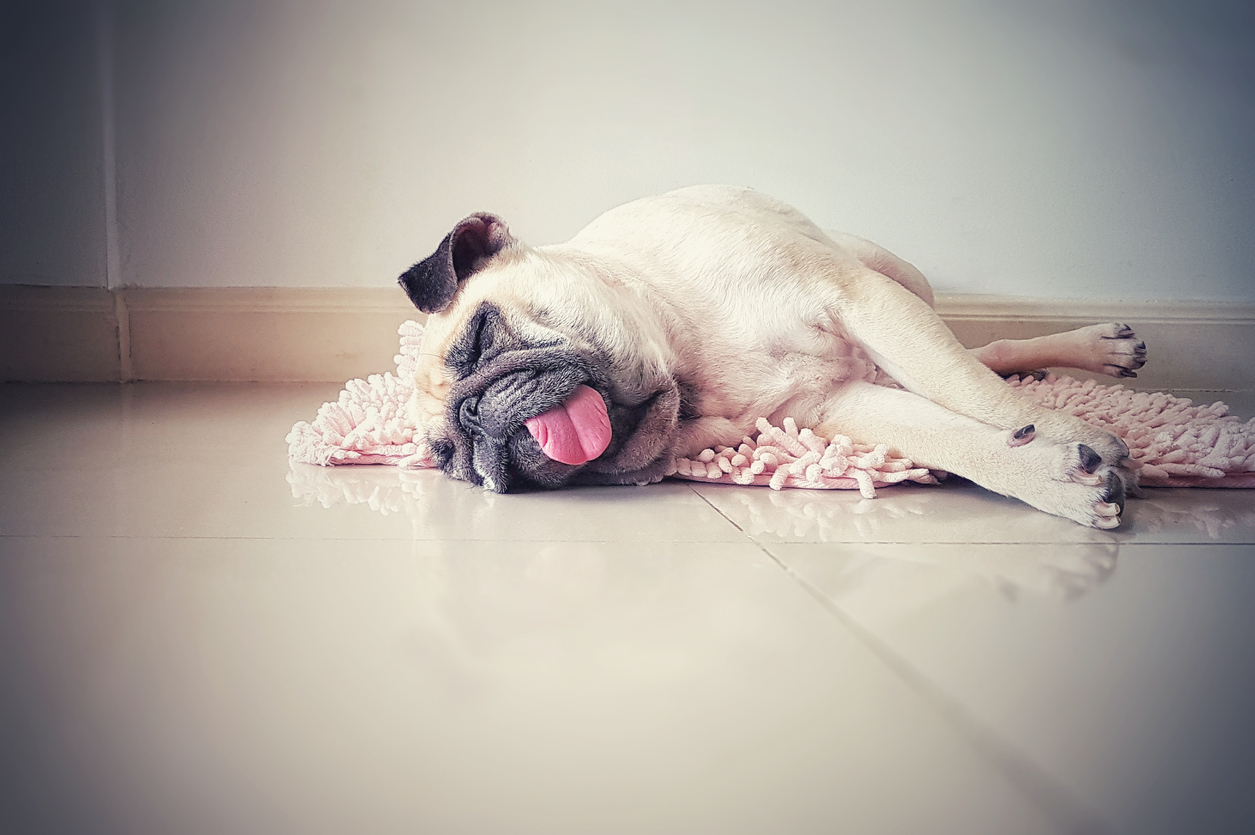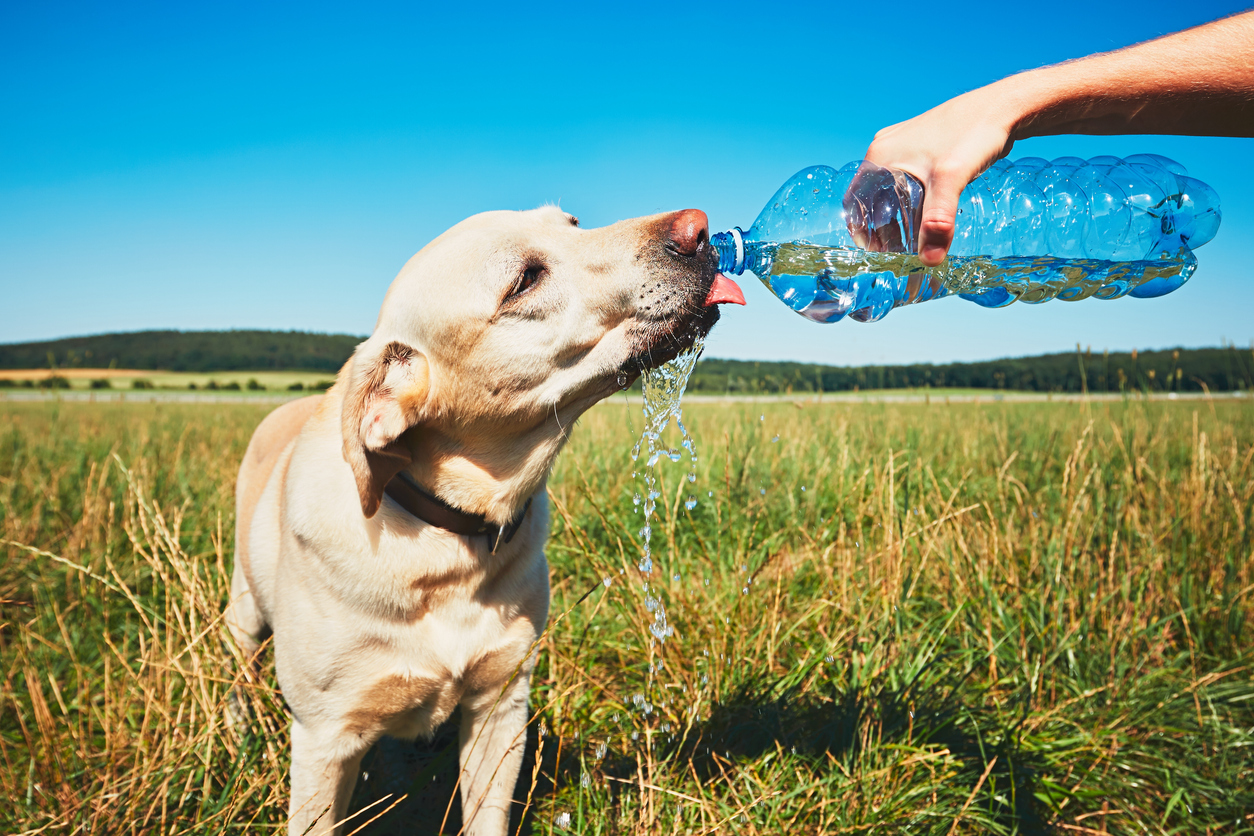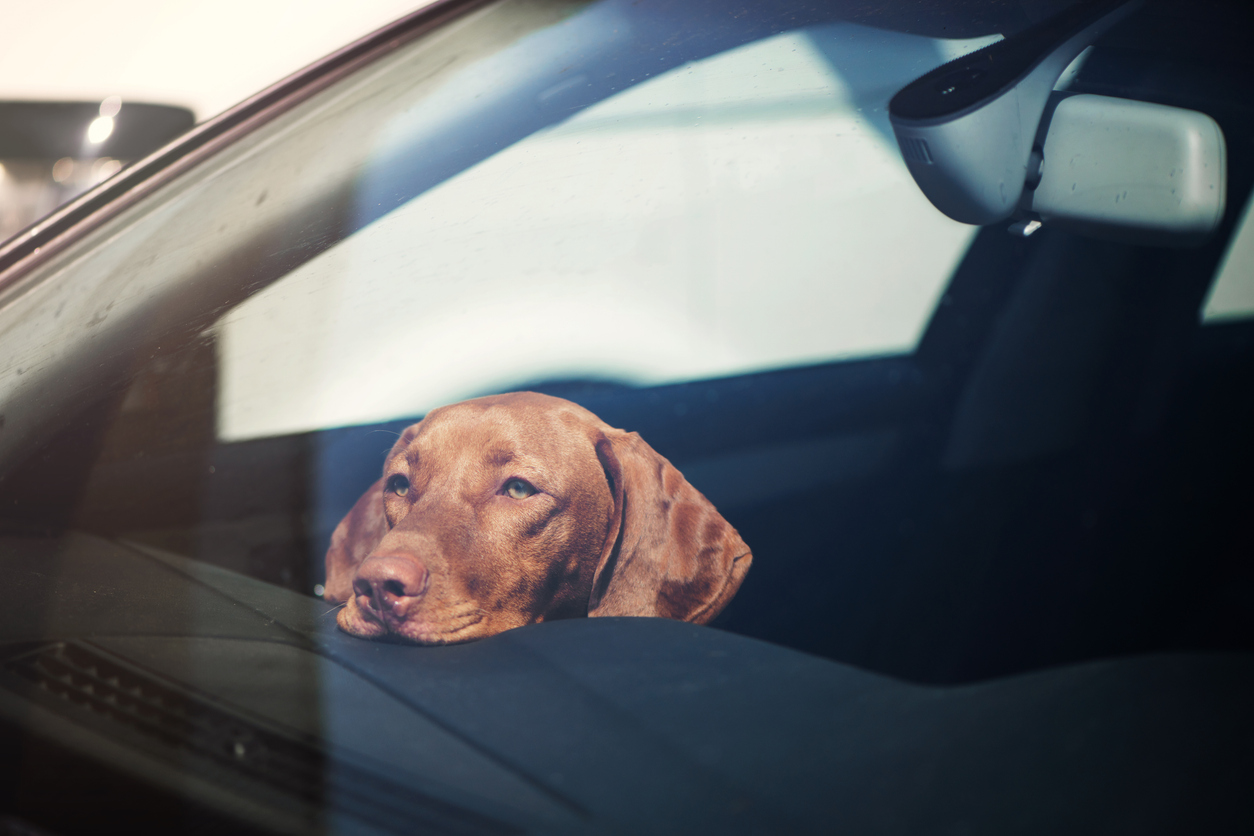Barbecue meals, walks in nature, lazing at the beach, trips and holidays abroad… For a whole host of reasons, summer is a time of year that we all look forward to, but for our chickens Just like for our four-legged friends, intense heat can be dangerous. Dogs are particularly vulnerable to heat stroke, and it’s essential to know how to protect them when temperatures soar during heatwaves. Here are some tips and advice to ensure your dog’s well-being during scorching days and help him cope better with the intense heat both indoors and outdoors.
What are the signs of heat stroke in dogs?
It is crucial to quickly recognize the signs of heatstroke in a dog so that you can act quickly. Here are the most common symptoms to look out for:
-Dogs regulate their temperature mainly by panting. If your dog is panting a lot more than usual or more loudly and his breathing is faster and irregular, it’s a sign that he’s too hot. Moreover, note that the normal body temperature for these pets is 38 to 39°C. At 40°C and aboveso this can be worrying.
-A dog who suddenly seems tired or lacks energy may be suffering from the heat. In contrast to weakness and lethargy, he may also appear more excited than usual. Be vigilant in the event of a change in attitude.
-The excessive saliva production may indicate that your dog is trying to cool down. In addition to salivation, the presence of foam should also be a cause for concern, just like a hot nose.
-Of the color changes in your dog’s mouth (blue tongue and lips) can signal a lack of oxygen due to overheating.
-Vomiting, diarrhea, etc. Gastrointestinal symptoms can also occur in the event of heatstroke.
-Dogs can shaking or having seizures or dizziness when they are overheated.
-Finally, one last worrying sign is a faster heartbeat.

Dogs at risk
Hyperthermia can especially occur in pets overweight, under treatment or dehydrated. Breeds with squashed noses may also have more difficulty breathing (bulldog, boxer, etc.). Vigilance must then be increased. Not being used to hot climates, being exposed to extreme heat several consecutive days and nightsliving in a confined, unventilated space, staying in the sun or doing intense activity can also increase the risk of heatstroke.
How to react in case of heatstroke in dogs?
Forcing your pet to drink is useless. If he needs it, he will drink on his own initiative if you present him with fresh water. Also ban ice, water jet or cool bath which could cool it too quickly, which exposes it to additional risks if it is already weakened. If you notice one or more of the signs listed or your doggie is feeling unwell, act immediately by going consult a veterinarian as soon as possible. We can also advise you on what to do over the phone if your little companion’s condition is not too serious.
The best, however, remains prevention so as not to face an emergency situation ! Here is how to protect your pet from the heat by following the advice and precautions during the summer season.
Tips for protecting your dog from the heat in summer

Keep your pet hydrated
Among the practical tips for keeping your dog cool and safe during periods of extreme heat, the most important is to ensure that he has always access to fresh, clean waterespecially when you go out. If you want, you can freeze water with chicken broth, toys and treats in a salad bowl or cake pan and give this to your dog to lick off when it gets too hot. This will amuse and refresh him.
Keeping your dog safe from the heat
Create shaded areas in your garden or balcony where your dog can take refuge. A well-ventilated kennel or dog tent can also be helpful. Above all, make sure that there is always a corner in the shade even when the sun turns during the day.
Good walking habits
Sidewalks and asphalt like sand can get hot in the sun. Prefer grass paths and always check the ground temperature for a few seconds with the back of your hand before going out. You can possibly put a very small touch of vaseline on its pads to limit cracking or dryness if necessary. Just avoid using too much, as roughness is important for dogs’ pads.
Also, walk your dog early morning or late evening preferablywhen temperatures are lower. Above all, avoid going out in the middle of the afternoon as much as possible, during the hottest hours of the day (generally between 10 a.m. and 6 p.m.) and protect it from UV rays if you stay for a while picnicking outdoors for example, because the UV rays are as bad for you as they are for him. So plan a anti-UV solar tent and sunshade in car.
Fresh tips
Ice, cold baths and cool jets of water should be avoided in case of heatstroke to avoid thermal shock. On the other hand, for prevention, you can give your dog lukewarm water baths to help him cool down. You can also use a damp washcloth to dampen his coat. Focus especially on his neck, his head, his stomach and the inside of his thighs. A water mist is also possible. Finally, there are cooling clothes which can be useful if your pet is used to wearing this type of accessory all year round. For example, there is a bandana or a cooling vest specially designed for dogs can help maintain their body temperature.
3) Things to avoid when it’s hot

To protect your dog from the heat, there are a few common mistakes to avoid. First of all, you should not never leave a dog in a car. Indeed, even with the windows ajar, the temperature inside the passenger compartment can rise quickly and become deadly. As for the air conditioning, it can break down. However, heat can kill your pet in just a few minuteswhich is why it is authorized to break a window to save a dog trapped in the heat.
If you cannot leave it at home, park in the shade with the window ajar and do not leave your pet alone without supervision. A companion may offer him a drink. Moreover, avoid traveling by car in very hot weather as much as possible. It’s already not pleasant for you, so imagine the effect on your furry best friend! If once again you cannot do otherwise, use the air conditioning (but not excessively) and the sunshade for the rear seat. In addition, take frequent breaks to give him something to drink, take him out to do his business and stretch your legs if the journey is long.
Moreover, avoid strenuous exercise and reduce physical activities during hot days. Playing and running can quickly overheat your dog. Additionally, while this may seem like a good idea, it should not be never completely shave his coateven if a small cut is indeed possible. In fact, its hairs act as an insulator against heat. If you want to clip it, ask your veterinarian for advice on how to do it safely. Finally, don’t neglect regular care. Brush your dog regularly to remove dead hair and allow better air circulation on his skin.


